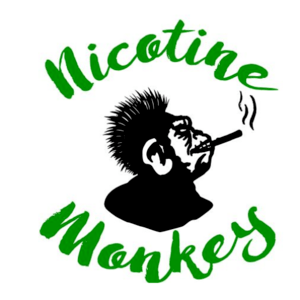 So much activity in dealing with the smoking problem is directed towards trying to get smokers to stop. But you have to start doing something before you can stop doing it. In this regard it seems the official policy is to discourage young people from taking up the habit by various means, which according to scientific studies seem to work, to some extent anyway. For example, requiring cigarettes to be sold in what are called plain packs. Actually they’re not plain at all, most of the surface of the pack being taken up with horrible pictures of smoking-induced diseases and health warnings writ large. We might see a picture of a cancerous lung and the legend ‘Smoking Kills’ or some such, the rest of the pack being a standard dull green and the maker’s name being relegated to small print at the bottom of one side of the pack. These graphic images and strong health warnings are meant to put young people off smoking, and perhaps they do. To some extent. Then there’s the price ploy: putting up the cost by taxation to make smokers think twice about wasting their money on such a purchase. This also seems to work. To some extent. And the ever-inventive tobacco control community (as it’s known) campaigns in addition for restriction in advertising of cigarettes and for banning smoking in public places. Quite right. But it’s not enough.
So much activity in dealing with the smoking problem is directed towards trying to get smokers to stop. But you have to start doing something before you can stop doing it. In this regard it seems the official policy is to discourage young people from taking up the habit by various means, which according to scientific studies seem to work, to some extent anyway. For example, requiring cigarettes to be sold in what are called plain packs. Actually they’re not plain at all, most of the surface of the pack being taken up with horrible pictures of smoking-induced diseases and health warnings writ large. We might see a picture of a cancerous lung and the legend ‘Smoking Kills’ or some such, the rest of the pack being a standard dull green and the maker’s name being relegated to small print at the bottom of one side of the pack. These graphic images and strong health warnings are meant to put young people off smoking, and perhaps they do. To some extent. Then there’s the price ploy: putting up the cost by taxation to make smokers think twice about wasting their money on such a purchase. This also seems to work. To some extent. And the ever-inventive tobacco control community (as it’s known) campaigns in addition for restriction in advertising of cigarettes and for banning smoking in public places. Quite right. But it’s not enough.
All these measures help, and some help more than others, in ‘driving down smoking prevalence’ in the parlance of the tobacco controllers. But none of them, evidence-based or otherwise, get to the heart of the problem. People still smoke!
The attitude of governments and the tobacco control community seems to be that smoking is here to stay. So there’s nothing that can be done to abolish tobacco and the best that can be done, while allowing tobacco companies to go on almost unrestrictedly peddling their poisonous products, is to discourage potential new nicotine addicts (smokers) from taking up the ‘habit’ and to encourage existing nicotine addicts to move towards thinking about making quit attempts. And the evidence-based way to do this, as readers of my previous posts will be aware, is by treating nicotine addiction with nicotine (!) or prescription drugs. Or both.
How about a re-think on the matter? Using nicotine products and drugs can result in about a 20 per cent success in smoking cessation, that is, an 80 per cent failure rate, in smokers who avail themselves of this kind of help when assessed one year later.
With such poor results, why does orthodox smoking cessation counselling stubbornly continue to promote this blinkered approach as the best way of quitting? It ignores other scientific studies that show by far the most successful method of stopping smoking is cold turkey. By the way, this colourful term is misleading because it’s supposed to indicate the suffering an addict goes through when withdrawing abruptly: cold sweats and goose bumps. Or should that be turkey bumps? Most smokers who abruptly stop poisoning themselves with nicotine, at least those whom I’ve treated, feel perfectly all right except for the psychological symptoms of mild short-lived anxiety and nervousness.
Interested readers can take a look at this 2010 paper by S Chapman and R MacKenzie, with its self-explanatory title: The Global Research Neglect of Unassisted Smoking Cessation: Causes and Consequences.
What then, can be done? The question of banning tobacco should be faced and openly debated by governments. It will not do for bodies such as ASH to say this is impractical. Nor will it do for false comparisons to be made between other allegedly unhealthy activities such as drinking alcohol or consuming sugar. Smoking must be seen for what it is: legalized drug addiction. Then legislation needs to be enacted accordingly.
Text © Gabriel Symonds

Leave A Comment